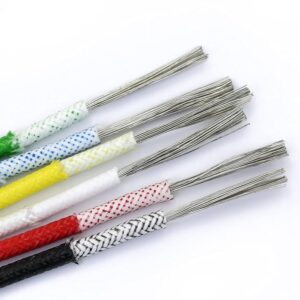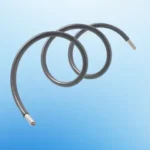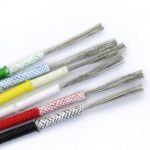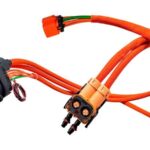In demanding electrical environments, where heat can easily damage ordinary wires, heat-resistant cables provide a reliable solution. These cables are engineered to maintain excellent electrical and mechanical properties even when exposed to extremely high temperatures.

Heat-Resistant Cable
Whether used in industrial furnaces, automotive systems, or aerospace applications, heat-resistant cables ensure continuous performance and safety where standard cables would fail.
What Is a Heat-Resistant Cable?
A heat-resistant cable, also known as a high-temperature cable, is designed to operate in environments that reach or exceed 150°C. Unlike regular PVC-insulated cables, which soften or degrade at high heat, these cables use advanced insulation materials such as silicone rubber, PTFE (Teflon), fiberglass, or mica tape.
The key purpose of a heat-resistant cable is to maintain insulation integrity and conductivity under extreme thermal stress, making it suitable for industries where both heat and reliability are critical.
Key Features and Benefits
Heat-resistant cables are built to handle both high performance and harsh conditions. Some of their standout features include:
🔥 Exceptional Heat Tolerance: Operates continuously at temperatures up to 250°C, depending on material type.
⚡ Stable Electrical Performance: Maintains dielectric strength and prevents insulation breakdown.
🧯 Flame Retardant & Self-Extinguishing: Reduces fire hazards and supports safer installations.
🧪 Chemical and Oil Resistance: Performs well in industrial environments exposed to lubricants or solvents.
🌦️ Weather and UV Resistance: Suitable for both indoor and outdoor applications.
🧰 Flexible and Durable: Resists cracking and remains pliable in both hot and cold conditions.
Common Materials Used in Heat-Resistant Cables
Different insulation materials provide different temperature ranges and performance characteristics:
| Material | Temperature Rating | Characteristics |
|---|---|---|
| Silicone Rubber | Up to 200°C | Excellent flexibility, flame resistance |
| PTFE (Teflon) | Up to 250°C | Exceptional chemical resistance, low friction |
| Fiberglass | Up to 400°C (short-term) | High tensile strength, ideal for furnaces |
| Mica Tape | Up to 1000°C (short-term) | Excellent fire resistance for emergency circuits |
Applications of Heat-Resistant Cables
Because of their versatility, heat-resistant cables are used in a wide range of industries:
Industrial heating systems and furnaces
Power generation and renewable energy
Automotive and electric vehicle wiring
Lighting and stage equipment
Aerospace and defense systems
Chemical and steel processing plants
Appliances and HVAC systems
These cables are indispensable in any environment that requires consistent performance under extreme heat or fluctuating temperatures.
Choosing the Right Heat-Resistant Cable
When selecting a heat-resistant cable, consider the following factors:
Operating Temperature: Ensure the insulation material matches the maximum working temperature.
Voltage Rating: Select a cable that meets the system’s electrical requirements.
Environmental Conditions: Consider exposure to chemicals, moisture, or UV light.
Flexibility Needs: For moving equipment, opt for silicone or PTFE types.
Matching the cable’s characteristics to your environment ensures longer service life and better performance.
Conclusion
Heat-resistant cables are essential for ensuring safety, reliability, and efficiency in high-temperature environments. With advanced materials such as silicone, PTFE, fiberglass, and mica, they offer excellent insulation performance and long-term durability.
If your project demands wiring that can handle heat, corrosion, or harsh industrial conditions, a heat-resistant cable is your best solution.
👉 Contact TOT Wire & Cable today to find the ideal heat-resistant cable for your application and get a competitive quote.




